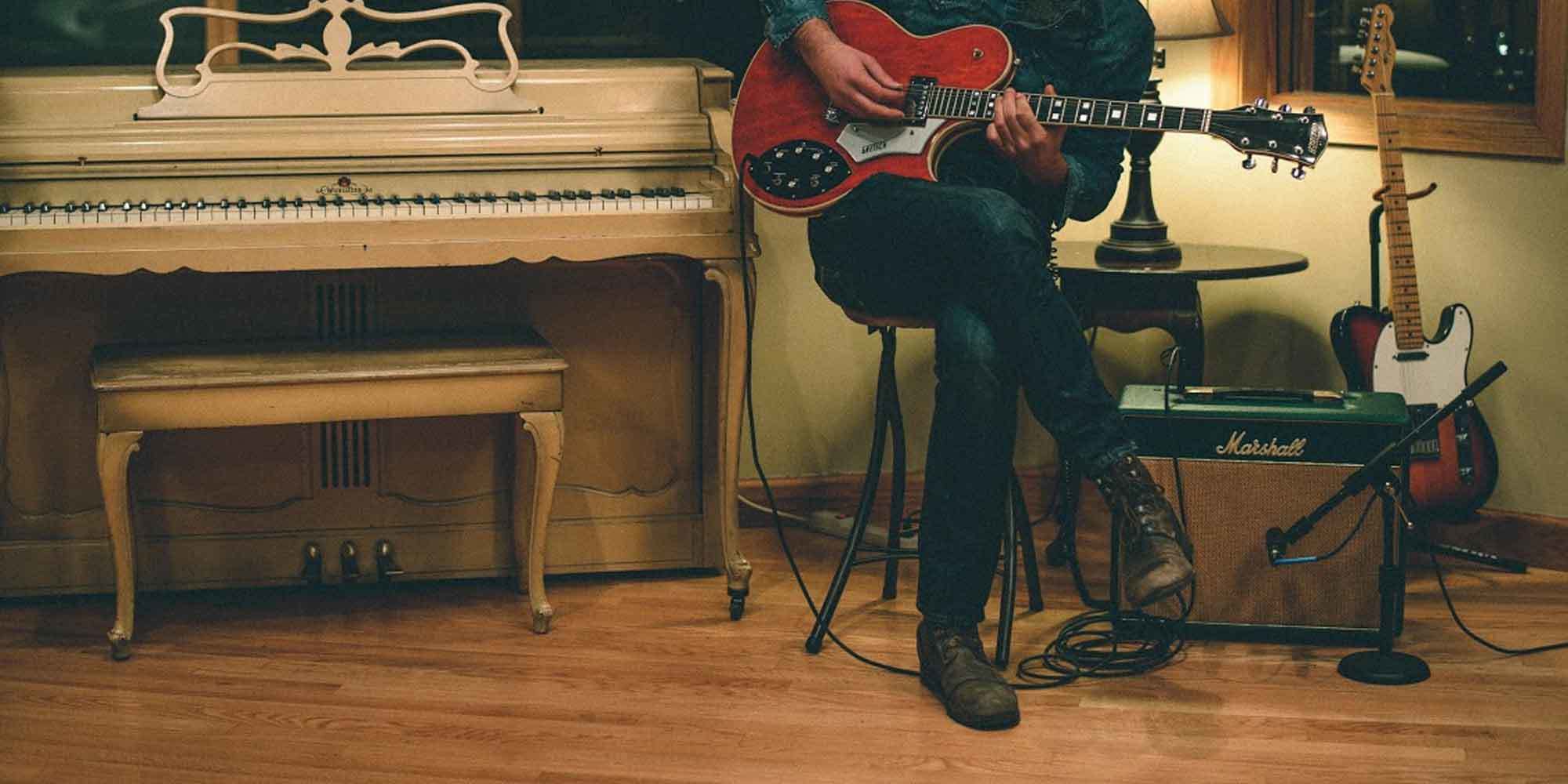When it comes to recording, a “signal path” is the course that an audio signal travels from its source — a microphone, electric guitar, electronic keyboard, etc. — to the studio monitors.
For this elementary tutorial, we’ll keep things simple by assuming that we are:
- recording using a standard DAW such as Pro Tools (all DAWs are more or less alike in terms of signal paths)
- that our source is a guitar plugged directly into an audio interface
- and that the output from the interface has been routed to an audio track input in Pro Tools and successfully recorded to a track
- We’ll also assume that we are mixing in stereo and that there is a stereo master fader
The default output selection on a track’s mixer channel routes the audio to the master fader, via output 1-2, and from there it goes back into the audio interface, where it is converted to analog and sent to the powered speaker system.
That’s the most direct signal path from the recorded track to the monitors when using a master fader (Ex. 1).
En route to the master fader, the signal passes through a pan control, which allows you to adjust the amount of signal being sent to the left and right channels of the stereo mix, determining where the sound is positioned within the 180-degree stereo image. You can also stop the sound dead in its tracks using the mute button, or mute all of the other tracks and hear it alone using the solo button (Ex. 2).
RELATED ARTICLE
Additionally, the track’s signal may be routed to one or more other places using auxiliary sends. Aux sends are used for many different purposes, like routing the signal to an effects plugin, such as a reverb that has its own aux track.
The recorded audio is still being routed directly to the master fader, but it is simultaneously being routed to the reverb using a second signal path. That way, reverb is added to the sound of the track, but the signal doesn’t run through the reverb plugin.
Like track channels, aux sends have level faders, pan controls, and mute and solo buttons (Ex. 3). There’s also a pre button that determines whether the signal is sent before or after the track’s channel fader. The pre-fader/post-fader option provides lots of useful flexibility that I won’t go into here.

Ex. 1) A Master Fader in Pro Tools.

Ex. 2) A Mixer channel for a mono audio track in Pro Tools, with pan control and mute and solo buttons.

Ex. 3) An Aux send control in Pro Tools.
Sometimes, rather than splitting the signal into main and auxiliary paths, you want to insert a plugin directly into the track’s main signal path, and that’s exactly what inserts do. Equalizers, compressors and modulation effects, for example, are typically inserted (Ex. 4). Plugins may also be inserted into the master fader channel, in which case they affect the entire mix.
In addition to routing a channel’s output signal to the master fader, it may be routed to any available outputs, including directly to the main stereo outputs, bypassing the master fader. The signal may also be routed to various destinations via buses.
Buses are simply signal paths from one place to another. For example, if you have two or more tracks that you want to control collectively, you can create an aux track and route all of their outputs to it (Ex. 5). Besides allowing you to control level, panning, etc., from a single point, you can insert a single plugin into the aux track to process all the tracks collectively, rather than burning up precious CPU by having individual instances of the same plugin on multiple tracks.

Ex. 4) A Mixer channel for an audio track with an aux send routed to a reverb plugin on a separate track and an EQ inserted.

Ex. 5) An audio track with its output bused to an aux track, the output of which is routed to the master fader. An EQ has been inserted into the aux track and a compressor has been inserted into the master fader.
There are myriad variations on these signal paths, including creating individual headphone mixes and incorporating virtual instruments — but hopefully this thumbnail sketch was helpful.
This new column will address topics of interest to recordists, ranging from remedial tutorials on essential terms and concepts (such as this one) to more advanced examples of studio geekery. Next up in On Tracks: “What is a Decibel?”
RELATED ARTICLE
About the Author:
Barry Cleveland is a San Francisco Bay Area-based journalist, author, guitarist and composer. He was an editor at Guitar Player magazine for 12 years and at Mix and Electronic Musician magazines before that. His book, “Joe Meek's Bold Techniques” is a cult classic, and he also contributed to the book “Whole Lotta Led Zeppelin.” He has released five albums and composes music for film and television.



